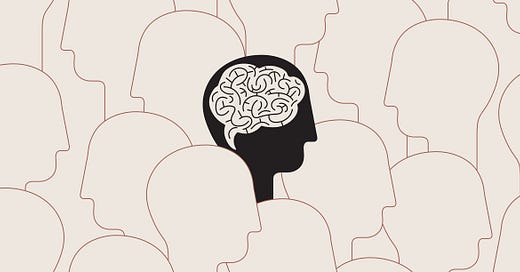Are there limits to inclusivity in the pluralism space?
In our first post here on Substack, I wanted to wrestle out loud with one of the moral quandaries of the work that I do. I hope you’ll join in the conversation too.
Inclusion is often seen as a guiding value in communities committed to pluralism. We strive to welcome different beliefs, identities, and perspectives, trusting that diversity makes our communities stronger. But what happens when inclusion invites in voices that deny the value of inclusion itself? When openness becomes a vulnerability?
I was recently on a Stories Change Power webinar, hosted by Piper Hendricks exploring how we can build bridges between differing values while still maintaining a shared sense of purpose and civic responsibility. You can check out the full conversation here.
As we wrapped up the discussion, Piper asked me “if there is one thing that you want people to remember, what is that thing?” I offered a simple reflection:
“If you want to be included, be inclusive.”
I’ve found this approach to be personally empowering and transformative, but this approach flies in the face of some mainstream thinking on the left and isn’t even always considered a good idea in pluralistic circles.
Inclusivity comes with real tensions. It gets messy when we include views or behaviors that seem to stand against the very spirit of pluralism itself.
Karl Popper’s "Paradox of Tolerance" speaks directly to this challenge. In The Open Society and Its Enemies, Popper warned that a society endlessly tolerant without limits risks being destroyed by the intolerant. He wrote:
"Unlimited tolerance must lead to the disappearance of tolerance. If we extend unlimited tolerance even to those who are intolerant, if we are not prepared to defend a tolerant society against the onslaught of the intolerant, then the tolerant will be destroyed, and tolerance with them."
Communities run into this problem every day. There are legal limits of course – no hate speech or physical violence. But culture is influenced by those at the edges. Free speech debates offer a vivid example. Protecting open dialogue is essential, but what happens when protecting everyone's voice means we end up legitimizing hate or exclusion?
Pedro Silva, a pastor and thoughtful voice in pluralism work, once framed this tension in a way that stuck with me. He sees communities that aim for a big tent get pulled to the extreme by the inclusion of the extreme. So, the logic goes, if you include folks who start out at the edges of acceptability—precisely those pluralistic work like mine aims to include—they will pull others toward them and spread their ideas, thus normalizing extreme views.
I do think it is a risk to take seriously.
Not only that, but some people hold views of others that are deeply hurtful on a personal level, and which, if actualized into policy, could physically harm whole segments of the population.
These realities bring the moral quandaries of pluralistic work front and center for me personally and for lots of folks in pro-pluralistic circles these days.
So it is tempting to see Popper’s warning as a simple solution: just do not tolerate intolerance. Draw a firm line. Close the doors on intolerance.
It feels like a valid and moral solution. But personally, I don’t believe it is functional, and it comes with moral quandaries of its own.
When you keep narrowing the bounds of acceptability, eventually you end with a community of one person. And you know what? That community of one is still imperfect.
Often hurtful views are held by multiple segments of the big tent population against each other. What do you do when marginalized segments of the population are trying to further marginalize each other? Just pick one to kick out, perhaps. But is that moral? I’m going to go with no, on that one. You could kick them both out—but see point one.
So how does a pluralist build community without letting the wolves eat the sheep? For me, it looks like this:
If you want to be included, be inclusive.
Bring the edges in.
Lots of little bridges to push your own boundaries.
Protect shared rights, emphasize shared responsibilities.
Everyone is accountable.
None of this is easy, and there is no simple moral right. I think all this will look different for every person. Here’s one story of what this looks like for me:
I was working consulting with a multi-faith group that aims to reduce tensions (by which I mean riots, destruction of property, and killing) between two socially conservative religious communities overseas. Speaking with a program participant, I asked if he and his counterpart of the other religion had yet had their families meet to build community. “Oh no,” he said explaining to me carefully, “in this part of the country, we don’t let our women meet other men.”
I could have walked away in disgust. Frankly, keeping women hostage to their households is grossly unacceptable in my opinion.
On the other hand, the riots, murders, and property destruction that stem from the intergroup conflict hurt everyone in this society, including women.
Reducing this intergroup violence may never lead to the equal recognition of women’s rights that I care deeply for, yet, it does move this society in a more pluralistic direction. It brings the edges in. So, on balance, I’m going to support this type of work.
To be honest, I had started to write more detail on what these principles look like, but it felt preachy. And on this issue, I feel like I’d rather be in the pews right now than the pulpit.
So I’d love to hear from you, with specific stories, about how you move in a complicated and pluralistic world.





